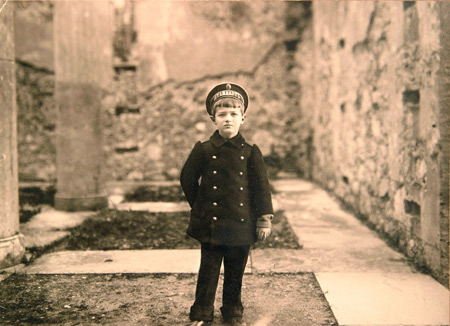
Hemophilia prevents proteins known as fibrins from forming a scab over a cut or forming clots to stop internal bleeding. Even minor injuries can lead to bleeding, which lasts for days or weeks and can be fatal. The disease is recessive and is carried on the X chromosome, meaning that men are more likely to develop it, whereas women usually act as carriers and don't show symptoms.
Such was the case with Prince Alexei Romanov, son of Tsar Nicholas II, great-grandson of Queen Victoria, and heir to the Russian throne. From an early age, Alexei was prone to prolonged bleeding, and his family feared that he wouldn't make it through his first month of life, says Evgeny Rogaev, a geneticist at the University of Massachusetts Medical School in Worcester. The disease didn't kill Alexei, however: He was murdered at age 13 in 1918 along with the rest of the Russian royal family following the Russian Revolution. Earlier this year, Rogaev and his colleagues reported that, based on DNA analysis, the bodies of two children found near the murder site were indeed those of Alexei and his sister Maria. They further confirmed that the other bodies near the site belonged to the rest of the Romanov family. But Rogaev wanted to solve the final Romanov riddle: Did they really suffer from hemophilia?
He and colleagues analyzed DNA from the royal bone fragments again, this time looking for genetic markers of hemophilia. The most common type of the disease, hemophilia A, accounts for about 80% of hemophilia cases and is caused by a mutation to a gene called F8, which encodes a protein involved in blood clotting. They didn't find the mutation. So Rogaev moved on to looking for a rarer form of the disease, hemophilia B, which involves another gene, F9. This time, the team found a mutation in F9, which would have inhibited clotting, in bones from Alexei, his sister Anastasia, and their mother Alexandra.
The findings, published online today in Science, indicate that Alexei did indeed have hemophilia B and that his mother and Anastasia were carriers for the disease, bearing out the previous speculation. They also confirm that the other instances of "Royal disease" in the family line were hemophilia, Rogaev says, because they all shared a common genetic heritage. The last carrier of the disease in the royal family was Prince Waldemar of Prussia, who died in 1945.
The disease impacted not only the Romanov family but also probably Russian history, Rogaev adds. Alexei's frail condition encouraged his mother Alexandra to keep close company with the Russian mystic Grigori Rasputin, who claimed to wield healing magic. "There was no medication at that time," Rogaev says. "She tried to do everything possible." According to some historians, when Rasputin used his close relationship with the Romanovs to influence bureaucratic affairs in his favor, the public grew increasingly suspicious of the regime, possibly hastening the revolution.
Katherine High, a hematologist who studies blood coagulation at The Children's Hospital of Philadelphia, says that the mutation found in the Romanov bones fits an established genetic pattern known to cause hemophilia B, further supporting Rogaev's findings. Tracing this pattern back to the royal family and its history of disease is "very interesting and very exciting," she says.
People affected by the disease today should be excited to see hemophilia B step out from under the more common A-type's shadow, says pediatric hematologist Paul Monahan of the University of North Carolina, Chapel Hill. "Now it's clear it's had an enormous impact on Western history."



Reader Comments
to our Newsletter